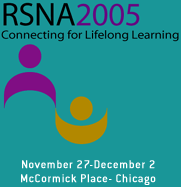
Abstract Archives of the RSNA, 2005
Hitoshi Kubo, Presenter: Nothing to Disclose
Masafumi Harada MD, PhD, Abstract Co-Author: Nothing to Disclose
Minoru Sakama PhD, Abstract Co-Author: Nothing to Disclose
Tsuyoshi Matsuda BS, Abstract Co-Author: Nothing to Disclose
Hiromu Nishitani MD, PhD, Abstract Co-Author: Nothing to Disclose
The purpose of this study was 1) to evaluate quantitative concentration and accuracy of short measurements methods of metabolites including alcohol on 3T MRI and 2) to demonstrate the dynamic changes of alcohol concentrations in normal human brain under the influence of drink.
Five normal volunteer (male, 21-25y) without any neurological findings were evaluated in this study. Local ethics committee approval was granted and informed consents of all subjects were obtained. All studies were performed with a 3T clinical scanner (Signa 3.0T VH/i) using a standard head coil. Our modified single voxel PRESS sequence (TR=2000msec., TE=35msec.) was applied under the condition of long scan time (272sec.) and short scan time (80 sec. and 56 sec.) for this study. The continuous measurements were conducted before and after subjects drank alcohol with a light meal. The peak level of alcohol in the blood was approximately 0.12%. Obtained spectra were quantified by LCModel Ver.6. The accuracy of measurements was estimated using Cramer-Rao lower bound expressed as %SD in an analysis datasheet of LCModel.
Alcohol peak after drinking can be clearly detected using our modified PRESS sequence in all three conditions of measurement duration (long and 2 short time scans). The concentrations of alcohol were estimated as 13.94 ± 0.92 by 272 sec. scan (mean ± SD), 12.01 ± 1.70 by 80 sec. scan and 13.82 ± 1.21 by 56 sec. scan which did not show statistical significant difference. The lower bound of our estimation expressed by %SD was within the range between 9% and 18%. The continuous measurement showed time dependent decrease of alcohol and slight increase of glucose in the brain. However, the time course of decrease in alcohol was different in each subject, indicating individual difference of alcohol metabolism.
It was considered that the accuracy of quantified concentration of metabolites including alcohol by sub-minute measurement on 3 T was within the limitation of conventional usage on 1.5 Tesla, and dynamic evaluation of metabolism of alcohol and glucose would be applicable for clinical patients.
Kubo, H,
Harada, M,
Sakama, M,
Matsuda, T,
Nishitani, H,
Dynamic Evaluation of Short Interval Alcohol Metabolism in Human Brain Using Single Voxel Proton MRS with LC Model Curve Fitting by 3 Tesla Clinical Apparatus. Radiological Society of North America 2005 Scientific Assembly and Annual Meeting, November 27 - December 2, 2005 ,Chicago IL.
http://archive.rsna.org/2005/4416097.html

